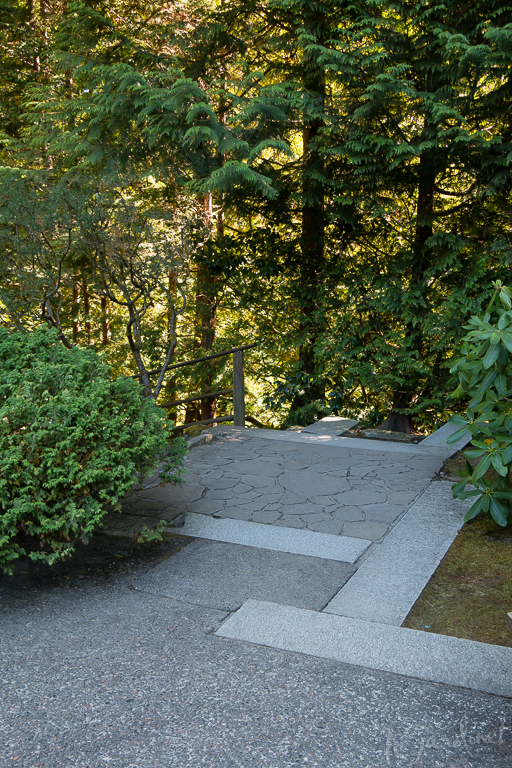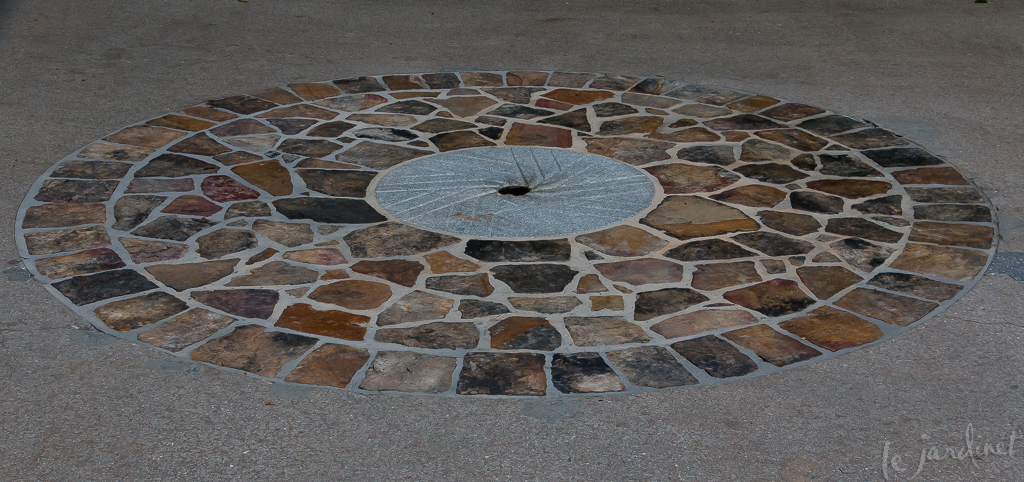Pathway Transitions: Designer Details
Every garden needs pathways for navigation. Whether it is a means to get from the driveway to the front door, a short stretch from the back door to the garbage cans or a meandering trek through an abundantly planted border, each pathway has a distinctive role. That role in turn determines the paths width and the material it is likely to be made from: frequently traveled routes being wider and offering a reliably firm footing while a narrow woodland path may be just a 2-foot wide strip of mulch.
What fascinates me as a designer is the place at which paths intersect, change direction or change in function: what we refer to as transitions, which in turn become exciting design opportunities.
A Transition to a More Intimate Space
A visit to the Japanese Garden in Portland last week offered several wonderful examples of how to execute such transitions.

A transition created by an archway, beyond which the path becomes narrower and more intricate – Portland Japanese Garden
In the photo above, a simple archway invites the visitor to linger briefly under its protective roof. Underfoot the previously linear footpath (in the foreground) becomes a mosaic of both the rectilinear slabs and some newly introduced, random flagstone. Beyond this stone carpet the pathway continues on the same axis but is now narrower and the incorporation of flagstone continues, creating a more intricate pattern. This suggests to the visitor that care must be taken, they are entering a more intimate space and that taking slower steps would be wise. Yet this transition is smooth. There is no jarring change of materials, rather the incorporation of just one additional element and a change in dimensions. Assisting in creating a sense of unity, a narrow border of black stones held in place by interlocking tiles flanks one side of each section. drawing the eye through the entire space.
This marvelous yet simple attention to detail creates a change in atmosphere and therefore the visitor's experience.
The private garden shown above demonstrates the same principles but using different materials. Here the visitor is invited to leave the primary herringbone brick pathway and walk up two, transitional grassy steps into a much narrower space. The bricks in this smaller path are laid in a running bond pattern so while the material suggests continuity the design details are unique.
How can you use this idea in your own garden?
Can you widen the path into more of a carpet under an archway to make it a stronger transition? Or create a patio space within the path as in the example below:

The original flagstone path has been intersected by a grey cobble patio, the pattern and change of material emphasizing the new function in this transitional space. Read the full story here.
Can you adjust the width of the path before/beyond a transition point?
A Transition at the Top of Steps
Landings at the top of a flight of steps offer an opportunity for creativity. This is a space where we adjust our stride and reach for the handrail as we head down, or stop to collect our breath when we reach the top! Either way, this is a location where we might pause for just a moment or two longer than usual. In the photo above, the designers switched from concrete paths edged with rectangular stone slabs to a flagstone motif on the landing.
How can you use this idea in your own garden?
What about installing a mosaic detail on a landing?
A perhaps a special tile?
Share your ideas in the comments below or on my Facebook page – I'd love to see what you do!




